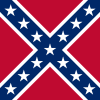

| Online: | |
| Visits: | |
| Stories: |

| Story Views | |
| Now: | |
| Last Hour: | |
| Last 24 Hours: | |
| Total: | |
Evolution of White Supremacy in Carolina
It may seem strange to write of the evolution of White supremacy in a colony founded by Barbadian planters who held strong racial views and hailed from a plantation society which served as the mother colony for the British Greater Caribbean. Add to this the fact that the Barbadian and other British West Indian colonists who settled Carolina had a marked preference for African labor. And the Fundamental Constitutions of Carolina gave the White planter “absolute power and authority over his negro slaves.”
Nevertheless, there was an organic process at work in which the racial realities of this mainland outpost of the Caribbean gave birth to legislation and social norms that over time came to define White supremacy in Carolina.
Dr. Peter Wood in his book Black Majority: Negroes in Colonial South Carolina from 1670 through the Stono Rebellion (1974) writes:
[I]t was not until 1717 that racial anxieties reached a level sufficient for legislative action. An act passed in that year “for the better governing and regulating white servants” made clear that “any white woman, whether free or a servant, that shall suffer herself to be got with child by a negro or other slave or free negro,… shall become a servant for … seven years.” If the woman was a servant, she had seven years added to her term, and if the begetter was a free Negro, he was made a servant for seven years. Moreover, according to the act, “the issues or children of such unnatural and inordinate copulation shall be servants until they arrive at the age of the male twenty one years and the females eighteen years.”
Though African slavery is more associated with early South Carolina than the early Chesapeake, it too used a mixed labor system in the beginning of White, Indian and Black workers. In those early years as the Proprietors and leading planters sought out a cash crop upon which to base the colony farming and raising cattle were leading industries. Servants and slaves of different races frequently worked beside or near each other. Thus, concern was first directed to discourage racial-mixing among these lowest classes.
As rice cultivation slowly came to dominate the South Carolina Lowcountry the Black population grew and by around 1708 Blacks were the majority in the colony. Slowly they displaced White servants and Indian slaves as the Barbadian-dominated planter class settled upon a cash crop which became as important to South Carolina as sugar was to Barbados.
We will continue to explore in future posts how White supremacy developed organically in the region during this time.
Source: http://www.occidentaldissent.com/2017/04/04/evolution-of-white-supremacy-in-carolina/


